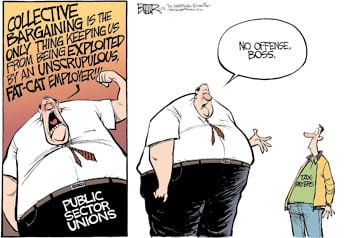
Although the United States is generally recognized as having a free-market, capitalist economy, many services are provided by various levels of government, rather than by the private sector, which means that those services are delivered according to the socialist economic model. The American public school system provides a classic example of how that plays out. The so-called “central planners” determine what is to be taught and how it is to be taught, with virtually no input from consumers (parents and students). In fact, in the rare instances when said consumers attempt to make their preferences known, such as objecting to the use of a certain book in the curriculum, it is not at all uncommon for the teachers, administrators, and school board to “circle the wagons” and repel them.
The socialist model has allowed the public school “central planners” to arbitrarily decide how the measure of success of their system is to be determined. In turn, this has enabled them to manipulate the system, in order to produce results that make them look good. For example, when public school systems were measured by their graduation rates, schools lowered the standards and graduated more students. When the criterion was standardized test scores, schools focused on the subjects covered by the tests and lobbied to have the tests designed in such a way that the students could maximize their scores. When extra funding became available for what is commonly referred to as “special needs” students, public schools began classifying increasing numbers of students as “special needs.” One school district in Philadelphia even classified its gifted and talented program as “special needs.” This allowed it to not only maximize its funding, but also made its measured success level in educating “special needs” students look superior!
About 90 percent of American students attend government schools for primary and secondary education, but all taxpayers pay into the system. This has allowed public school teachers and administrators to enjoy far higher wages, better healthcare benefits, more job security, and higher guaranteed pensions than their counterparts in the private sector. For example, it was recently reported that the average public school teacher compensation (salary and benefits) in Milwaukee is more than $100,000 per year. For many a parochial or private school teacher in Wisconsin, that would be like winning the lottery every single year.
 It would be one thing if public schools offered more bang for the buck but, as John Stossel has pointed out on his 20/20 television reports, it’s the parochial and private schools (and home-schoolers) that are yielding the better relative results, based on everything from college board entrance exam scores to the rankings in national spelling bees and geography bees. (And I wish I had a dollar for every time I have read about some college or university having to start remedial reading and math programs, because so many members of the incoming freshman classes were deficient in those basic skills.)
It would be one thing if public schools offered more bang for the buck but, as John Stossel has pointed out on his 20/20 television reports, it’s the parochial and private schools (and home-schoolers) that are yielding the better relative results, based on everything from college board entrance exam scores to the rankings in national spelling bees and geography bees. (And I wish I had a dollar for every time I have read about some college or university having to start remedial reading and math programs, because so many members of the incoming freshman classes were deficient in those basic skills.)
It appears that the main goal of the public education “central planners” is to keep reducing the class size, which allows them to call for ever larger amounts of funding. And yet, the research literature on the matter shows little connection between class size and student achievement. However, smaller classes mean less work for the teachers (but not less pay, of course), and more members and dues for the teachers unions.
Similarly, the teachers unions have fought for significantly higher pay for teachers who hold master’s degrees, even though the research reveals no relationship between student performance and the type of degree a teacher holds. As it turns out, having an advanced degree not only boosts a teacher’s salary (and dues to the union), but results in significantly higher pension benefits as well, because the pension a teacher ultimately receives is tied to the salary he/she receives during the final years of his/her career.
And it’s not just teachers’ salaries that are running up the cost of public school payrolls; there has been a huge increase in administrators and other non-teacher personnel, all of whom draw salaries.
In his last State of the State speech in 2010, former Wisconsin Governor Jim Doyle admitted that, during his eight-year administration, $5 billion had been funneled into the Milwaukee public school system from the rest of the state, and there was virtually nothing to show for it. Why is it that the “central planners” do not try to ensure that increased expenditures on education result in better student performance? The answer is that increased funding is a benefit in and of itself. The bigger the budget, the bigger the salary will be of the administrator who manages it. The more money in the system, the more will be paid out in salaries and benefits. When there is no link between cost and performance, price tends to rise and quality tends to deteriorate, which is precisely what has happened in U.S. public schools.
In the private sector, when a company delivers poor service, it loses business. In the public sector, when a government agency delivers poor service, the call goes out for more funding, and it is usually forthcoming. Go figure!


